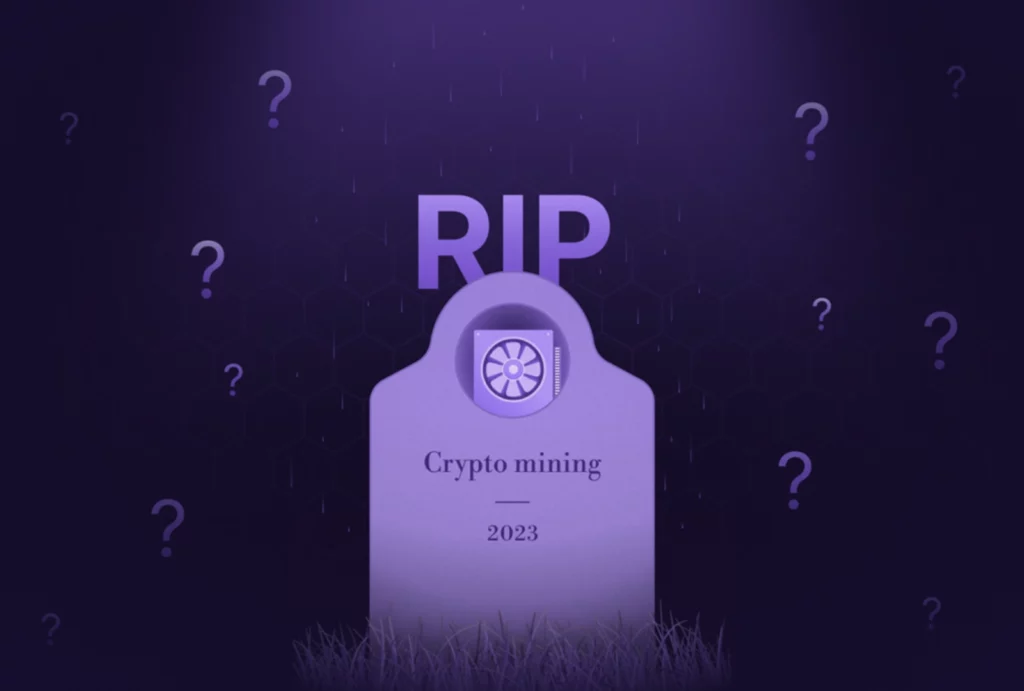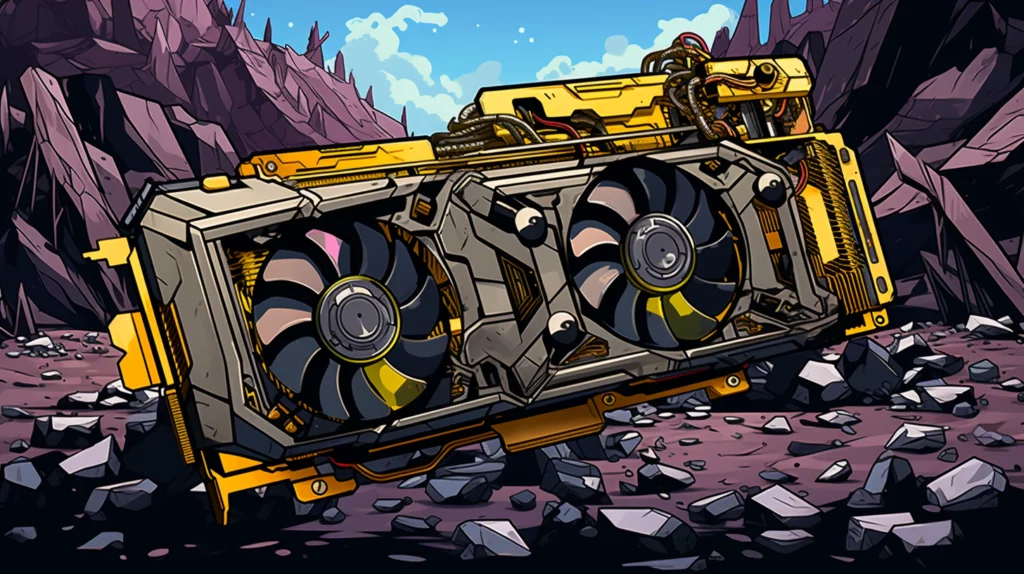Is Crypto Mining Dead in 2024? Exploring the Future of Crypto Mining


Crypto mining, once the realm of enthusiasts and early adopters, has undergone significant changes over the years. A notable example is the Ethereum, which effectively ended traditional mining activities by transitioning from Proof of Work (PoW) to Proof of Stake (PoS), marking a significant shift in the mining landscape. With the evolution of blockchain technology and the fluctuating value of cryptocurrencies, the question on many minds is: Is crypto mining dead? In this comprehensive exploration, we’ll delve into the current state of crypto mining, examine its challenges and opportunities, and peer into its future.
Table of contents
The rise and fall of crypto mining: an overview

Cryptocurrency mining burst onto the scene with the advent of Bitcoin in 2009. Miners played a crucial role in validating transactions and securing the blockchain, earning rewards in the form of new coins. In the early days, mining could be done on personal computers, but the growing complexity of algorithms and the increasing demand for computational power quickly led to the rise of mining farms and specialized hardware.
The Golden Era: Early Days of Mining
During the golden era of crypto mining, individuals could mine cryptocurrencies like Bitcoin from the comfort of their homes. All that was required was a computer with decent processing power. This accessibility and the promise of striking it rich attracted a wave of miners, contributing to the decentralized nature of cryptocurrencies.
Shift to Specialization: ASIC Miners
As cryptocurrencies gained popularity and their values soared, the algorithms governing their mining became more intricate. This shift prompted the development of Application-Specific Integrated Circuits (ASICs). These highly specialized machines offered unparalleled mining power but came with a hefty price tag. Small-scale miners found it increasingly difficult to compete with ASIC-equipped mining farms, leading to concerns about centralization.
Challenges confronting crypto mining

While crypto mining has come a long way, it faces several challenges that have prompted the question, is crypto mining dead?
Energy Consumption: The Environmental Debate
One of the most contentious issues surrounding crypto mining is its substantial energy consumption. Mining operations, especially those using Proof of Work (PoW) algorithms, demand significant computational power, contributing to concerns about environmental sustainability. Critics argue that the carbon footprint of some mining activities is alarming and incompatible with global efforts to combat climate change.
Increasing Complexity: The Arms Race
Cryptocurrency networks adjust mining difficulty to maintain a consistent block creation rate. As more miners join the network, the competition to solve complex algorithms and validate transactions intensifies. This has led to an arms race of sorts, with miners constantly upgrading their hardware to stay competitive. The high costs associated with staying ahead in this race have led many to question the profitability of mining.
Regulatory Uncertainty: Navigating Legal Hurdles
The regulatory landscape surrounding cryptocurrencies and mining is still evolving. Different countries have taken varying stances on the legality and taxation of mining activities. Regulatory uncertainty adds a layer of risk for miners, as sudden changes in policies can have significant financial implications.
Diminishing Rewards: Halving and Supply Scarcity
Most cryptocurrencies, like Bitcoin, have a predetermined supply limit. As mining progresses and a certain number of blocks are added to the blockchain, the rewards miners receive for their efforts are halved in a process known as the “halving.” While this is designed to control inflation and mimic the scarcity of precious metals, it also means that over time, miners receive fewer new coins as rewards.
Technological Evolution: The Emergence of PoS
Proof of Work (PoW), the traditional mining mechanism, requires miners to solve complex mathematical problems to validate transactions. However, newer cryptocurrencies are adopting Proof of Stake (PoS), which selects validators based on the number of coins they hold and are willing to “stake” as collateral. This transition challenges the dominance of PoW and raises questions about the future of traditional mining.
Is crypto mining dead ? Separating myth from reality

The query, “Is crypto mining dead?” echoes throughout the crypto community and beyond. Let’s tackle this head-on and separate myth from reality.
Myth: Crypto Mining is Completely Dead
Reality: While the landscape has evolved, crypto mining is not dead. It has, however, transformed into a more specialized and competitive industry. Small-scale miners might find it challenging to turn a profit due to rising costs, but large mining operations with access to substantial resources continue to thrive.
Myth: Profitability is Unattainable
Reality: Profitability in crypto mining depends on various factors, including the cost of electricity, hardware efficiency, and the current price of the mined cryptocurrency. While it might be harder for individual miners to achieve significant profits, strategic planning and staying updated with industry trends can still yield positive results.
Myth: PoS Spells Doom for PoW Mining
Reality: The emergence of Proof of Stake (PoS) does challenge traditional Proof of Work (PoW) mining, but it doesn’t render it obsolete. PoS offers energy efficiency and reduced centralization concerns, but PoW continues to be the preferred mechanism for established cryptocurrencies like Bitcoin.
Is crypto mining dead ? : The fate of crypto miningThe fate of crypto mining

As we gaze into the crystal ball of crypto mining’s future, several scenarios emerge:
1. Continued Evolution
Crypto mining will continue to evolve in response to technological advancements and market demands. New hardware innovations might level the playing field, enabling more miners to participate profitably.
2. Embrace of Green Mining
The environmental concerns associated with crypto mining will likely lead to the development of greener mining practices. This might involve greater adoption of renewable energy sources and the exploration of eco-friendly consensus mechanisms.
3. Is crypto mining dead? The rise of Decentralized Mining
To address concerns about centralization, efforts may be directed towards fostering decentralized mining networks. This could involve the development of protocols that promote wider distribution of mining power.
4. Integration of PoW and PoS
Rather than competing, Proof of Work (PoW) and Proof of Stake (PoS) mechanisms might find ways to coexist. Hybrid models could provide the benefits of both systems while mitigating their respective drawbacks.
5. Adaptation to Regulatory Changes
Mining operations will need to adapt swiftly to changing regulatory landscapes. Collaboration with policymakers and adherence to evolving legal requirements will be crucial for sustainability.
Frequently asked questions
No, it’s not too late. While the landscape has changed, there are still opportunities for miners who adapt to the evolving conditions.
While electricity costs vary, small-scale miners can explore energy-efficient hardware and consider relocating to areas with more affordable energy.
Yes, bear markets can lead to reduced network difficulty, potentially making mining more profitable for those who remain committed.
While ASICs offer efficiency for specific cryptocurrencies, GPU mining can still be viable for others. Choose hardware based on your chosen coin and budget.
The future is dynamic. Continued innovation, including eco-friendly mining solutions, can shape a sustainable and prosperous future for crypto mining
Conclusion
In the grand scheme of things, crypto mining is not dead, it’s transforming. The days of casual mining on personal computers are mostly behind us, replaced by a more competitive and specialized industry. As blockchain technology matures and cryptocurrencies continue to gain mainstream attention, the mining landscape will undoubtedly keep shifting. From energy consumption concerns to regulatory challenges, miners face a unique set of hurdles. But as long as there are cryptocurrencies to mine, the practice will persist. So, is crypto mining dead? Far from it. It’s undergoing a metamorphosis, adapting to the dynamic world it helped shape.